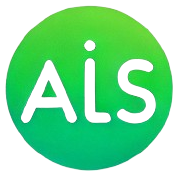5 Effective Ways to Relieve Back Pain Naturally – Surgery-Free Solutions
Back pain is a common problem that affects millions of people worldwide. It can range from mild discomfort to severe, debilitating pain that interferes with daily activities. While surgery is sometimes necessary for certain back conditions, there are several natural and non-invasive methods that can help alleviate back pain and promote healing. In this article, we will explore five effective ways to relieve back pain naturally, without the need for surgery.
1. Exercise Regularly
One of the best ways to relieve back pain naturally is through regular exercise. Exercise helps strengthen the muscles that support the spine, improve flexibility, and reduce the risk of future injuries. Low-impact exercises such as walking, swimming, and yoga can be particularly beneficial for people with back pain.
Yoga, in particular, has been shown to be effective in relieving back pain by improving posture, flexibility, and strength. Certain yoga poses, such as child’s pose, cat-cow stretch, and downward-facing dog, can help stretch and strengthen the muscles of the back, reducing pain and discomfort.
It is important to consult with a healthcare provider or a physical therapist before starting any exercise program, especially if you have a history of back pain or injury.
2. Maintain a Healthy Weight
Being overweight or obese can put extra strain on the spine and lead to back pain. Losing weight through a combination of healthy eating and regular exercise can help reduce this strain and alleviate back pain. A diet rich in fruits, vegetables, whole grains, and lean proteins can help you maintain a healthy weight and reduce inflammation in the body, which can contribute to back pain.

Consulting with a nutritionist or dietitian can help you develop a personalized weight loss plan that is safe and effective for your individual needs.
3. Improve Posture
Poor posture is a common cause of back pain, especially in the lower back. Slouching or hunching over can put strain on the muscles and ligaments of the spine, leading to discomfort and pain. Improving posture by sitting and standing up straight, keeping the shoulders back, and maintaining a neutral spine can help alleviate back pain and prevent future issues.
Using ergonomic furniture and equipment, such as a supportive chair and a proper desk setup, can also help improve posture and reduce back pain. Taking regular breaks to stretch and move around during prolonged periods of sitting can prevent stiffness and tension in the back muscles.
4. Practice Mindfulness and Stress Reduction Techniques
Stress and anxiety can exacerbate back pain by causing muscle tension and inflammation in the body. Practicing mindfulness techniques such as deep breathing, meditation, and progressive muscle relaxation can help reduce stress levels and promote relaxation, which can in turn alleviate back pain.

Yoga and tai chi are mind-body practices that combine gentle movement with breath awareness and meditation, promoting relaxation and stress relief. These practices can be especially beneficial for people with back pain, as they help improve flexibility, posture, and overall well-being.
5. Try Alternative Therapies
There are several alternative therapies that can help relieve back pain naturally, without the need for surgery. Acupuncture, massage therapy, chiropractic care, and herbal remedies are all popular options for people seeking non-invasive treatments for back pain.
Acupuncture involves the insertion of thin needles into specific points on the body to help relieve pain and promote healing. Massage therapy can help relax tense muscles, improve circulation, and reduce pain and stiffness in the back. Chiropractic care focuses on aligning the spine and joints to alleviate pain and improve function. Herbal remedies such as turmeric, ginger, and willow bark have anti-inflammatory properties that can help reduce pain and inflammation in the body.
Before trying any alternative therapy, it is important to consult with a qualified healthcare provider to ensure that it is safe and appropriate for your individual needs.
Conclusion
Back pain is a common condition that can be both frustrating and debilitating. While surgery is sometimes necessary for severe back problems, there are several natural and non-invasive methods that can help alleviate back pain and promote healing. By incorporating regular exercise, maintaining a healthy weight, improving posture, practicing mindfulness techniques, and trying alternative therapies, you can effectively relieve back pain without the need for surgery.
Remember to consult with a healthcare provider before starting any new treatment plan, and listen to your body to determine what works best for you. By taking a holistic approach to back pain management, you can improve your quality of life and enjoy a healthy, pain-free back for years to come.

